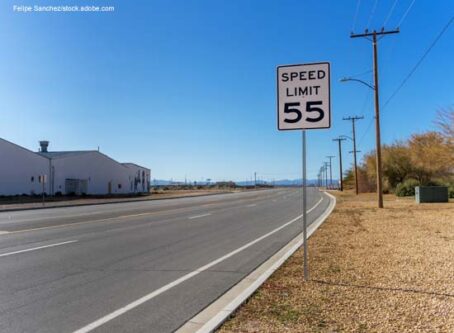NHTSA reports drop in fatal crashes in 2017; large truck crashes up
After two consecutive years of increases in fatal motor vehicle crashes, the National Highway Traffic Safety Administration is reporting an annual decrease for 2017. That’s according to NHTSA’s annual fatal crash overview released this week. Only SUVs and large truck reported an annual increase.
Last year, 37,133 people were killed in vehicle traffic crashes, a 1.8-percent decrease from 37,806 in 2016. Nearly all segments reported decreases in fatal crashes except for two: SUVs and large trucks.
In 2016, fatal crashes increased by 6.5 percent. In 2015, fatal crashes increased by 8.4 percent.
According to the preliminary numbers, fatal crashes involving large trucks increased by 9 percent. Specific to tractor-trailers, fatal crashes increased by 5.8 percent. However, fatal crashes involving single-unit straight trucks jumped up nearly 19 percent.
Andrew King, research assistant for the Owner-Operator Independent Driver’s Association’s Foundation, pointed out that these numbers are only preliminary. Official numbers typically take two years to be released and are likely to change.
King also pointed out that the largest increase in fatal truck crashes was for straight trucks and those between 10,000 and 14,000 pounds, mostly likely associated with higher demand in just-in-time deliveries.
“(The report) also highlights what the Foundation has been saying for many years, since the implementation of CSA, crashes have continued to rise,” King said. “FMCSA needs to focus more on stricter enforcement than on compliance. It would seem counterintuitive to remove enforcement personnel from the road in order to emphasize roadside inspections to prevent crashes and fatalities involving commercial motor vehicles.”
Furthermore, fatal crash numbers do not reveal which vehicle was at fault. Referring to CVSA’s numbers, King said that 70 percent of fatal crashes involving a large truck and a passenger vehicle were the fault of the passenger vehicle.
The overall lower fatal crash rate comes despite an increase in vehicle miles traveled, which usually has a positive correlation with fatal crashes. Although VMT increased by 1.2 percent last year when compared to 2016, the fatality rate per 100 million VMT dropped 2.5 percent to 1.16.
Changes in occupant deaths by vehicle type:
- Pedalcyclists (8.1 percent decrease).
- Van occupants (5.8 percent decrease).
- Pickup truck occupants (4.5 percent decrease).
- Motorcyclists (3.1 percent decrease).
- Pedestrians (1.7 percent decrease).
- Passenger car occupants (1.1 percent decrease).
- SUV occupants (3 percent increase).
- Large truck occupants (16 percent increase).
With 841 large truck occupant deaths, 2017 was the deadliest year for large truck occupants since 1989, when there were 858 large truck occupant fatalities.
Geographically, numbers are mixed. Urban fatalities went up 17.4 percent since 2008, whereas rural fatalities declined 18 percent. In 2017 and 2016, the number of urban fatalities was larger than the number of rural fatalities. In 2015 and beyond, rural fatalities outnumbered urban fatalities.
Younger drivers are reporting more favorable numbers than their older counterparts. From 2008 to 2017, fatal crashes involving drivers ages 16-24 dropped by 16.3 percent. Increases were seen across the board for other age groups, including 25-44 (2.6 percent increase), 45-64 (9.4 percent increase) and 65 and older (29.1 percent increase). This may not necessarily be the result of younger drivers operating vehicles more safely. It may be attributable to the fact younger Americans are driving less. Over 10 years, there have been 1.5 percent fewer licensed drivers ages 16-24. Conversely, there has been an increase in licensed drivers for the higher age groups.
Nationally, the fatal crash rate is down 1.8 percent, but numbers vary greatly per state. New Hampshire experienced a 25 percent decrease in fatal crashes. On the other hand, Rhode Island saw an increase of 62.7 percent.
For the full report, click here.









